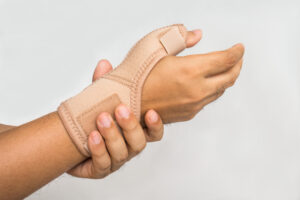A slipped disc (or herniated disc) happens when the soft inner core of an intervertebral disc pushes through its tougher outer layer. This can irritate nearby nerves, causing pain, numbness or weakness. Traditional thinking often points towards surgery, but modern conservative therapies offer surprising results for many patients, especially when the injury is recent or mild.
Understanding Non-Surgical Disc Treatment
Non-surgical approaches centre on reducing inflammation, relieving nerve pressure and strengthening the supporting muscles around your spine. A typical plan might include:
- Targeted physiotherapy: Guided exercises focus on gentle stretching, core stabilisation and postural correction. These aim to support the spine’s natural curves and prevent further strain.
- Manual therapy: Skilled hands-on techniques such as mobilisation or soft-tissue massage help improve joint movement and ease muscle tension.
- Pain modulation: Non-steroidal anti-inflammatory medications or cold laser therapy can reduce swelling around the affected disc, while techniques such as transcutaneous electrical nerve stimulation (TENS) may provide additional relief.
- Lifestyle adjustments: Ergonomic advice for your workspace, instructions on safe lifting and tips for maintaining a healthy weight all play a vital role in long-term success.
Why Conservative Care Can Work
Research concludes that up to 90% of individuals with a lumbar herniated disc improve immensely with non-surgical management within six weeks. By focusing on gradual strengthening and flexibility, you encourage the body’s natural healing processes. The bulging disc material often retracts over time, and the surrounding muscles adapt to sustain adequate spine alignment.
When to Consider a Specialist Consultation
If your symptoms include severe weakness, loss of bladder or bowel control, or pain that doesn’t improve after a few weeks of conservative measures, it’s important to seek prompt evaluation. An orthopaedic spine specialist can confirm the diagnosis via imaging and advise whether you remain a candidate for non-surgical disc treatment or if minimally invasive interventions are warranted.
Building Your Personal Recovery Plan
During your first appointment, the specialist will review your medical history, assess your posture and perform a neurological exam. From there, you’ll co-design a tailored programme combining hands-on therapy, home exercises and lifestyle coaching. Consistency is key. Commitment to daily routines and regular check-ins ensures progress stays on track.
You don’t have to resign yourself to surgery at the first sign of a slipped disc. Many patients find that non-surgical disc treatment not only relieves pain but also equips them with exercises and habits that protect the spine long after recovery.
Ready to explore how a conservative approach could get you back on your feet and back to your routine? Schedule a consultation with our Orthopaedic Spine Specialist today and take the first step towards a stronger, healthier back.













